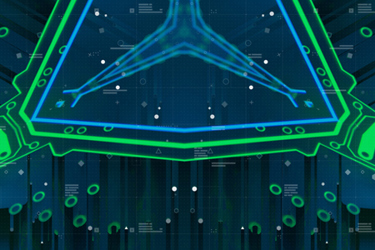Rapid Diagnostics And The Quest To Develop The Fabled Star Trek Tricorder
By Ivor Campbell, Snedden Campbell

When two or more people from the world of medical technology meet, talk inevitably turns to the ongoing, yet elusive, search for an industry-standard, multidisciplinary diagnostic device: the fabled tricorder.
Fans of Star Trek will recall the small rectangular gadget with a top-mounted rotating hood and shoulder strap, routinely carried by Dr. “Bones” McCoy whenever he was beamed down to a new planet. Simply by waving it in the general direction of stricken Starship Enterprise crew members, Bones was somehow able to diagnose anything from acute Hutchinson-Gilford Progeria syndrome to an ingrown toenail. Of course, this was unnecessary for any crew member wearing a red shirt as they would be killed by aliens.
Notable Efforts Over The Past Decade
While the Star Trek tricorder remains the stuff of science fiction, diagnostics companies globally continue to beaver away behind the scenes in search of a machine capable of diagnosing the highest number of possible conditions within a single technology.
Visitors to global conventions like Medica and Medlab will be aware of the now perennial beauty contest among companies showing off their latest prototypes of devices and software aimed at facilitating multiple test capabilities.
A decade ago, Qualcomm, the San Diego-based communications technology company, offered a $10 million prize to anyone who could produce a machine that most closely approximated the tricorder. The winner was Final Frontier Medical Devices, based in Paoli, PA, whose DxtER device was capable of diagnosing 13 different conditions by integrating insights from clinical emergency medicine and data analysis from actual patients, using non-invasive sensors to collect vital signs, body chemistry, and biological function data.
Since then, the march of artificial intelligence (AI) has placed booster rockets under existing technologies to create advances that would have seemed unthinkable only a few years ago.
Devices such as digital stethoscopes like Clinicloud and Eko Core and one-channel ECG monitors like WIWE and AliveCor's Kardia reveal a focus on making diagnoses faster, more accurate, and convenient. The availability of multichannel ECGs, like the ECG Dongle, and multi-sensor devices such as Viatom Checkme Pro, further demonstrates the evolution of diagnostic capabilities. These devices aim to streamline the diagnostic process, providing users with real-time data and promoting communication with smartphones for comprehensive health monitoring.
Last year, a team at the University of California-Santa Cruz announced it had developed a portable gadget that uses a special laser to analyze tiny particles in blood samples to simultaneously identify multiple viruses, DNA, antibodies, and cancer markers. Unlike other chip-based blood test devices that focus on a single target, this technology integrates optics and microfluidic channels on a chip, allowing it to identify various particles with different concentrations. The device uses a laser beam to detect particles and adjusts its sensitivity to accurately measure both high and low concentrations. The researchers, led by Holger Schmidt, also applied machine learning to enhance accuracy in distinguishing different particle types. The technology is being commercialized by Fluxus Inc. for medical use and holds potential for studying neurodegenerative diseases and pediatric cancers.
The reason for the industry’s obsession with such devices is because, in the world of medical diagnostics, the pursuit of efficiency has become relentless, particularly since the Covid pandemic.
However, having a fantastic product with brilliant engineering is not enough. Cost-effectiveness and speed are crucial factors that can make or break a diagnostic device and the company behind it and, as demands on public health providers continue to mount, the significance of anything that can save doctors time, and the health services money, cannot be overstated.
Can Advanced Diagnostic Tools Ease Burdens On Practitioners?
An ongoing review of how to triage and treat general practice (GP) patients quickly and effectively is underway in many countries around the world. The current model, in which local family doctors’ offices are the first port of call for patients, is seen by many people as no longer fit for purpose, not least because they don’t currently operate outside of office hours when more people now want to be seen.
In the future, it is expected that much of the burden of general practice will fall on out-of-hours clinics and local pharmacies, and that cleverer and more versatile diagnostic technologies will play an ever-greater role. Limited shelf space in pharmacies and in confined consulting rooms creates a demand for ever more compact and multifunctional solutions, hence the search for the tricorder-like devices. Yet, while the physical and cost benefits of such devices are clear, there is a growing awareness that they might create new and unintended consequences for medical practitioners. In particular, there is a recognition of the dilemma GPs face when presented with immediate and potentially life-altering information about a patient's condition. The delicate balance between rapid diagnostics and allowing healthcare professionals the time to carefully analyze and plan treatment is a critical consideration.
Part of the review’s remit is to find ways to free GPs from dealing with relatively minor and less consequential conditions that they currently spend so much time diagnosing and treating. Many countries have a large number of highly qualified pharmacists, with extensive pharmaceutical education, who could contribute significantly to alleviating pressures on local doctors’ offices but whose skills are currently underutilized. However, the lack of automation in pharmacy systems and the physical constraints within their premises prevent pharmacists from realizing their full diagnostic potential. But things are changing. Similar to the evolution of personal computers in recent decades, medtech is now adapting to this demand. The integration of AI elements into these diagnostic platforms is a notable development in the past couple of years, emphasizing the interconnectedness of diagnostics and technology.
Navigating The Evolving Landscape Ahead
The commercialization of the testing devices is primarily being driven by American computer hardware companies rather than traditional players in the medtech sector, with growing competition from China and India, which are developing an ever more prominent role in the industry, driven by the vast markets and a growing middle-class interest in healthcare.
And just as Microsoft and Apple came to dominate the manufacture and supply of PC software, it is anticipated that a small number of global suppliers will do the same for universal medical diagnostics.
As digital health continues to advance, collaboration with regulatory agencies becomes ever more crucial in ensuring the reliability and accuracy of these innovative diagnostic tools. While existing devices may still fall somewhat short of the tricorder, the medtech industry appears to remain focused on boldly going where no portable diagnostic tool has gone before.
 About The Author:
About The Author:
Ivor Campbell is chief executive of U.K.-based Snedden Campbell, a specialist recruitment consultant for the global medical technology industry.
